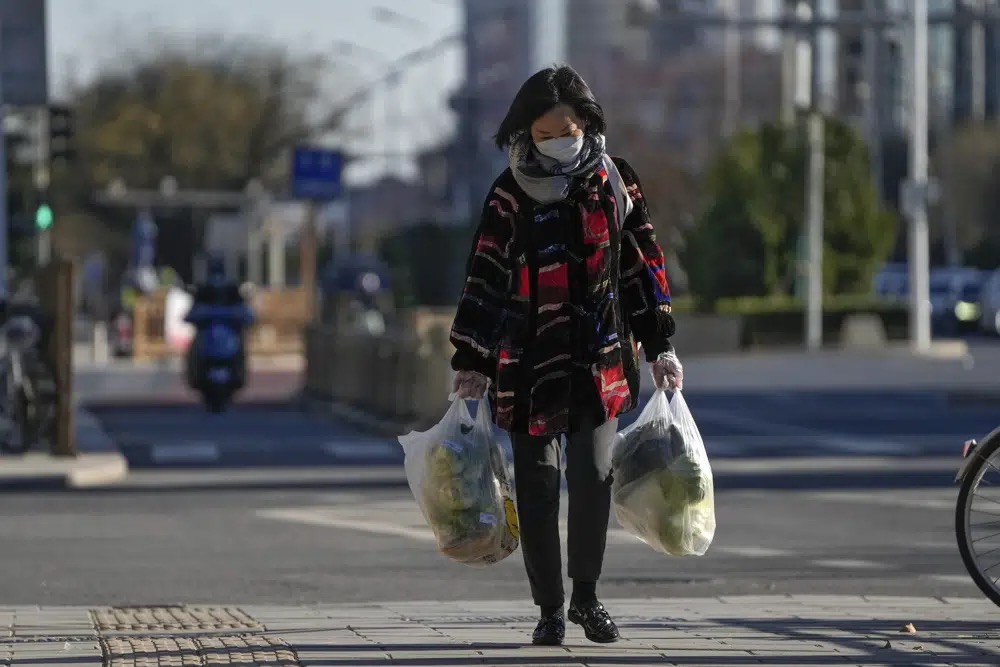On Tuesday, Beijing announced nucleic testing results are no longer required at supermarkets and office buildings, but a 48-hour negative PCR test result mandate remains in place for dine-in customers as well as nursing homes and schools.

A woman wearing a face mask and groves carries bags of groceries walks on a street in Beijing, Monday, Dec. 5, 2022. (Photo: AP)
Since last week, local authorities across China have been easing COVID-19 restrictions: Shanghai and Sichuan’s Chengdu will not mark the health codes of citizens without a negative testing result in seven consecutive days as yellow – a temporary mobility restriction tool used to limit community-level transmissions.
Similar waivers have also been instituted in Yunnan’s Kunming, Guangdong’s Zhuhai, and Jiangxi’s Nanchang, where residents won’t be asked to show testing results to take subways and buses, or while entering supermarkets, restaurants, schools, and drug stores.
With the milder but fast spreading Omicron variant, China has been fine-tuning its zero-COVID strategy to strike a balance between protecting its people from the virus and resuming normalcy as soon as possible. Bloomberg referred to China’s latest transition in its zero-COVID strategy as “a revised playbook that relies more on targeted measures to control the virus.”
Scaling back epidemic control boosted recovery in several sectors of the Chinese economy. Southwest China’s Chongqing said most enterprises above designated size in the city had resumed production as of December 4. Meanwhile, the number of flight and train ticket purchased has spiked over the last week.
Chinese Vice Premier Sun Chunlan on December 1 underlined the importance of constantly optimizing the country's COVID-19 response by taking “small, incessant steps.”
More than 90 percent of the Chinese public has been fully vaccinated and health awareness among the public has been significantly improved. The pathogenicity of the Omicron virus is weakening, Sun said, adding that all these factors have created the conditions for tweaking epidemic response measures.
Taking small and incessant steps means making dynamic adjustments that are hugely important, said Gao Fu, an academician of the Chinese Academy of Sciences, on Sunday at a conference.
To achieve such protection, a critical task of the adjusted strategy is to speed up vaccination across all age groups, especially among senior citizens. Only 65.8 percent of the at-risk demographic is fully vaccinated among those 80 and older, and 40 percent have received booster shots.
Dr. Zhang Wenhong, top Chinese health expert from Shanghai, said that the small-step approach is to provide fuller protection for vulnerable groups to prevent death rates in vulnerable groups from spiking based on international pandemic control experience.
On November 29, the State Council joint prevention and control mechanism against COVID-19 issued a work plan to ramp up vaccination among senior citizens to protect this vulnerable group against the virus.
Local authorities’ softening tone toward epidemic controls is also reflected in allowing close contacts of infected patients to self-isolate at home should they meet certain requirements. Feng Zijian, deputy director of the Chinese CDC, said it would be necessary for people with mild symptoms and asymptomatic patients to recover at home if makeshift hospitals are overwhelmed at any point.


